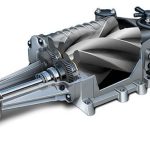The suspension system is important for steering wheel performance. Worn suspension parts can hurt steering accuracy. Many drivers do not know that suspension health impacts steering feel and control. Service centers provide different levels of inspection and repair. These tiers show clients how to move from basic checks to detailed maintenance of suspension and steering. This connection helps drivers have safer and smoother rides.
How suspension impacts steering control
The suspension holds the vehicle up. It manages how the wheels move. It takes in shocks and holds tires on the road. Worn or damaged suspension parts can cause wheel misalignment. This misalignment causes bad steering and makes it hard to control the vehicle. Service centers begin with visual checks of suspensions in basic service levels. Technicians look for worn shocks, struts, or broken springs. These issues change how the steering feels, even when driving slowly. Early suspension service keeps steering control accurate.
How worn suspension bushings affect steering.
Bushings link suspension parts. They enable smooth movement. When the bushings wear out, movement becomes loose or stiff. This wear leads to unclear steering feedback or a wandering steering wheel. Intermediate service tiers include detailed bushing checks and replacements. Technicians check for strange sounds and test the steering. New bushings improve steering and stability. This step is key for safe vehicle handling. Selection of the Auto Repair in Essex, MD based service is essential here.
Ball joints and tie rods help steer the vehicle.
Ball joints and tie rods connect the suspension and steering system. Worn ball joints make steering loose. They lower steering accuracy a lot. Tie rods help with wheel alignment and steering angle. Damaged tie rods can cause steering to pull to one side. It may also feel unresponsive. Higher service levels check ball joints and tie rods closely. Technicians use special tools. They measure play and alignment angles. Fixing these issues helps the steering wheel work better. It also boosts driver confidence. These repairs help tires and suspension parts last longer.
Suspension alignment affects steering wheel performance.
Good suspension alignment helps steering feel better. When alignment drifts, wheels do not track straight. This causes steering wheel vibration or pulling. Service centers offer alignment services to fix this problem. Technicians use machines to measure and adjust camber, caster, and toe angles. This change puts the steering wheel back in the right center position. Good alignment helps drivers feel less tired. It also makes driving safer. Regular checks help avoid wear on suspension and steering parts.
Suspension care and driving comfort
A good suspension makes driving smooth and easy. It reduces vibrations and absorbs bumps well. When suspension gets worse, steering feels heavy or uneven. This causes discomfort. The top service tiers include full suspension maintenance. This covers shock absorber replacement and spring repairs. These services make the steering wheel feel better. They stabilize the vehicle body. Drivers get better steering and less road noise. Good suspension care helps steering and makes rides comfortable.
The suspension system and steering wheel work together. Suspension issues cause steering problems. This makes driving unsafe. Service tiers show the way from basic inspections to full suspension and steering repairs. Look for early signs of suspension wear. Replacing bushings and repairing ball joints improves steering accuracy. Alignment services keep the steering wheel straight and responsive. Full suspension maintenance helps comfort and control. Good suspension helps the steering wheel work well. This makes drives safer and more fun for everyone.











